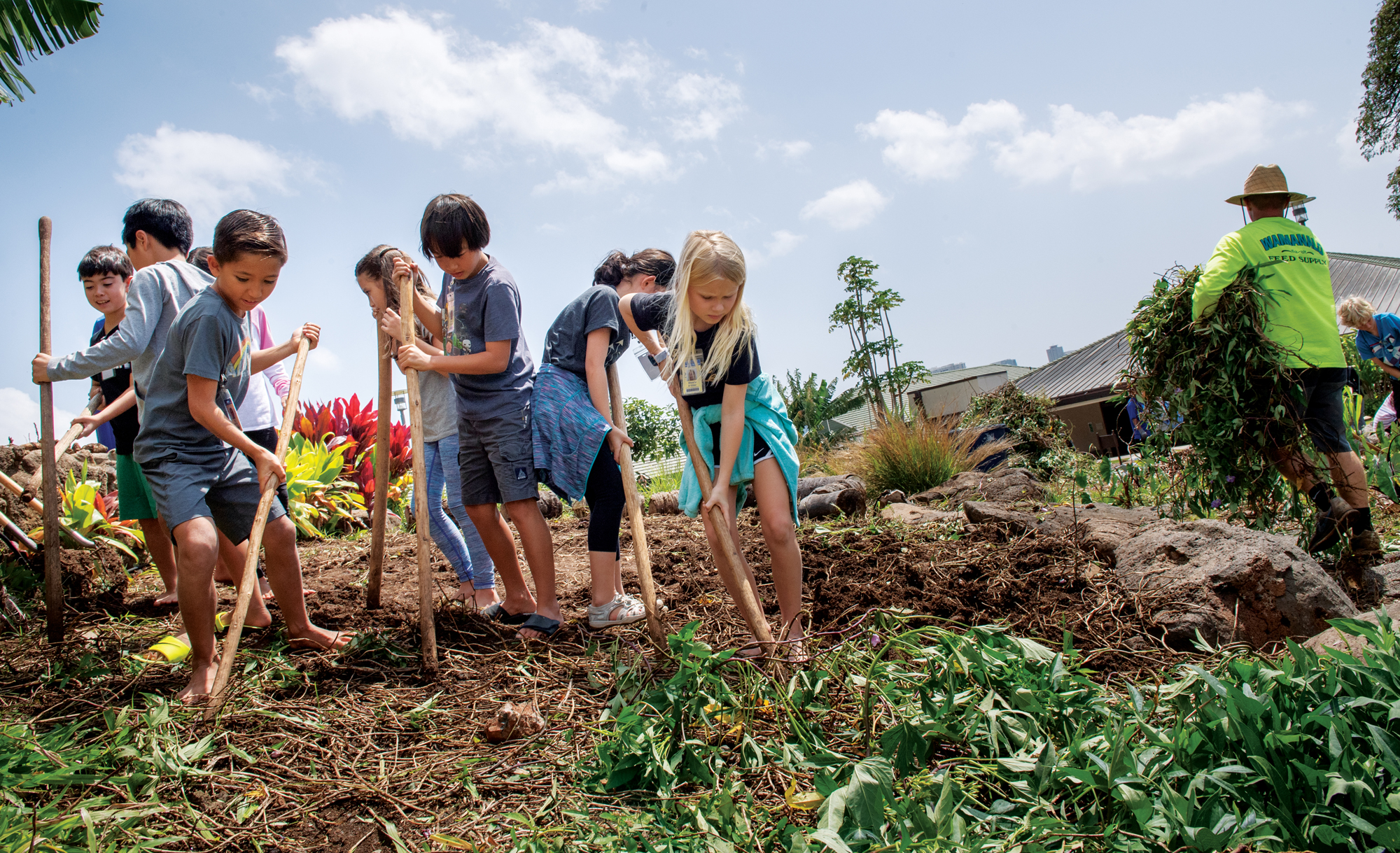Related: ‘Ike Loa
By Diane Seo ’85

A group of third-graders are sprawled on the lānai outside their Kosasa classroom, gazing at an ‘ulu tree. With clipboards and sharpened pencils in hand, they sketch the breadfruit as part of a lesson blending Hawaiian culture and art.
A few weeks later, the same students, along with the rest of the third-graders at Kosasa, are back outside, using ‘ō‘ō, or digging sticks, to harvest kalo to make pa‘i‘ai for their upcoming lū‘au.
Such scenes show how Sidney and Minnie Kosasa Community – with its lush outdoor spaces filled with native plants, flowers and trees – abounds with opportunities to teach children about Hawaiian culture. “It makes the learning more real for the kids,” third-grade teacher Denise Awaya ’88 Wong says. “They’re surrounded by Hawaiian plants and culture, so they see it.”

Students at Kosasa can visualize how the loulu, or palms, and pili grass growing outside their classrooms were used to thatch homes; how kukui nuts were used to extract oil to create light; how kukui also was turned into butter to grease the ipu; how wauke was used to create kapa, or tapa cloth. They see the beauty of native Hawaiian flowers and plants firsthand. And when they hear tales about old Hawai‘i, they can look outside and feel closer to the stories.
Connecting students to the ‘āina was one of the aspirations that Punahou President Jim Scott ’70 and other School leaders had in mind when designing and planning the grades 2 – 5 community. With the focus in third grade on Hawaiian studies, Kosasa became an ideal setting to have indigenous and endemic plants and trees that could be part of hands-on curricular lessons. This matched the overall vision for the School to create inspired learning spaces when constructing new facilities on campus.
With phase 1b of Kosasa Community opening this fall, there will be even more opportunities to showcase Hawaiian culture. There are plans to build a permanent imu to prepare food for the annual third-grade lū‘au, as well as an irrigation system connecting the Lily Pond to the new Community. Students will see how Hawaiians used water from natural sources to grow plants – how they regarded water as precious and only used what was needed.
“This teaches them not to waste water, which was important to Hawaiians,” Wong says. “We try to replicate how native Hawaiians lived in an ahupua‘a, how they lived off the land.”

Ku‘u Punahou
Ku‘u Punahou, the Campaign for Punahou School, is in its final stretch, with a goal of raising $175 million by June 30, 2019. As of late February, more than $171 million has been raised to support students, faculty, programs and facilities, including construction of Sidney and Minnie Kosasa Community for Grades 2 – 5. The Kosasa Community is one of the top priorities of the Ku‘u Punahou Campaign, with the final phase opening in fall 2019.
Learn more at campaign.punahou.edu.

